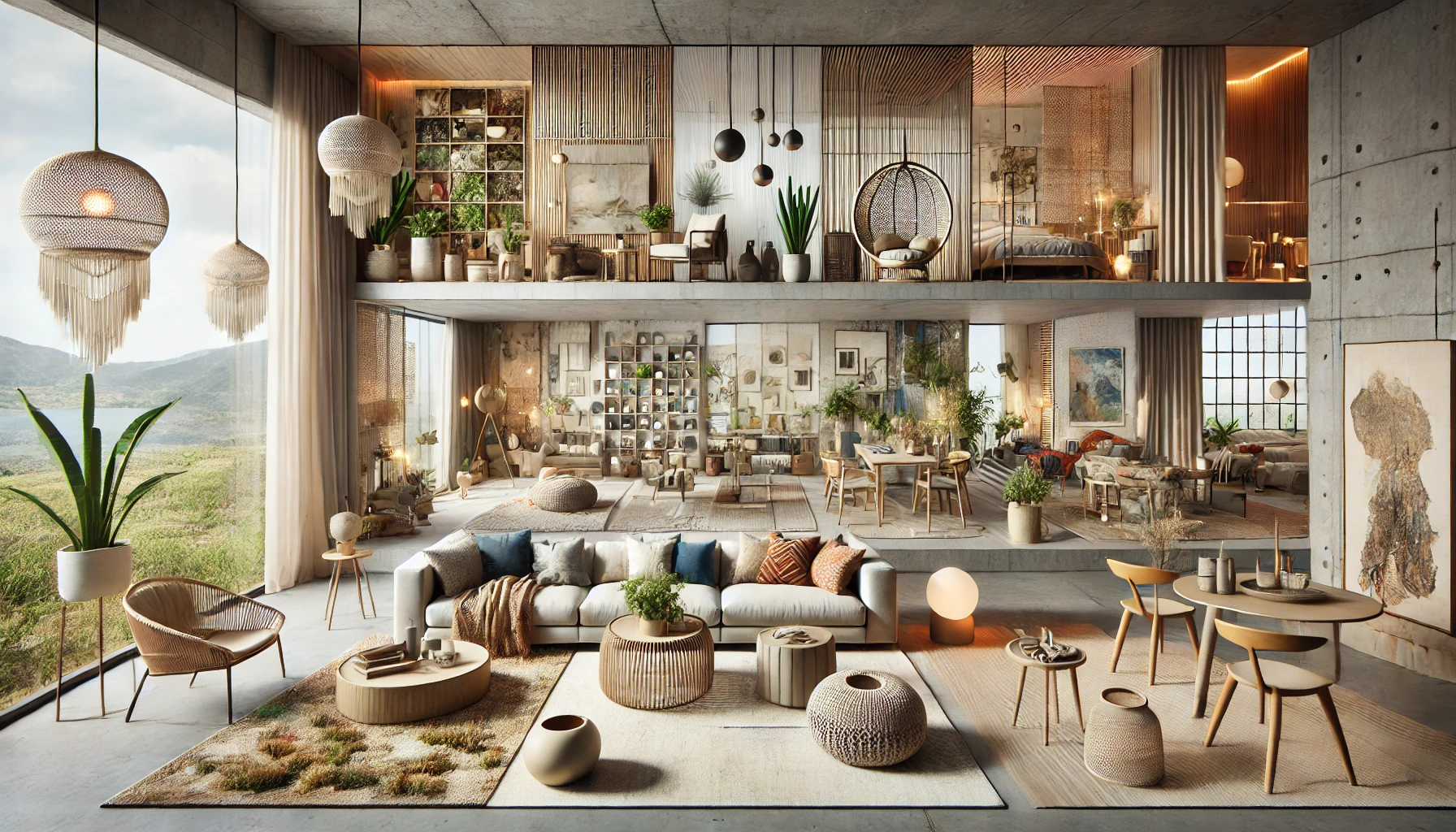The year 2026 marks a thrilling evolution in interior design, where creativity meets purpose. This year’s trends invite homeowners and designers alike to explore a world of diverse aesthetics, each with its unique personality. Yet, underlying this diversity is a unifying vision—embracing sustainability, enhancing functionality, and celebrating individuality. From the organic charm of nature-inspired designs to the boldness of retro futurism, 2026 is set to transform interiors into more than just spaces; they become experiences.
The interior design trends for 2026 radiate a blend of creativity and innovation, seamlessly combining aesthetics with functionality. Diverse styles cater to various lifestyles, yet a shared emphasis on sustainability, smart home integration, and innovative materials unites them. From the eclectic charm of Boho Revival to the sleek serenity of Japandi, let’s explore these trends in detail.
Best Interior Design Trends for 2026
Let’s dive into the styles that are shaping the future of design.
Bohemian Style (“Boho Revival”)
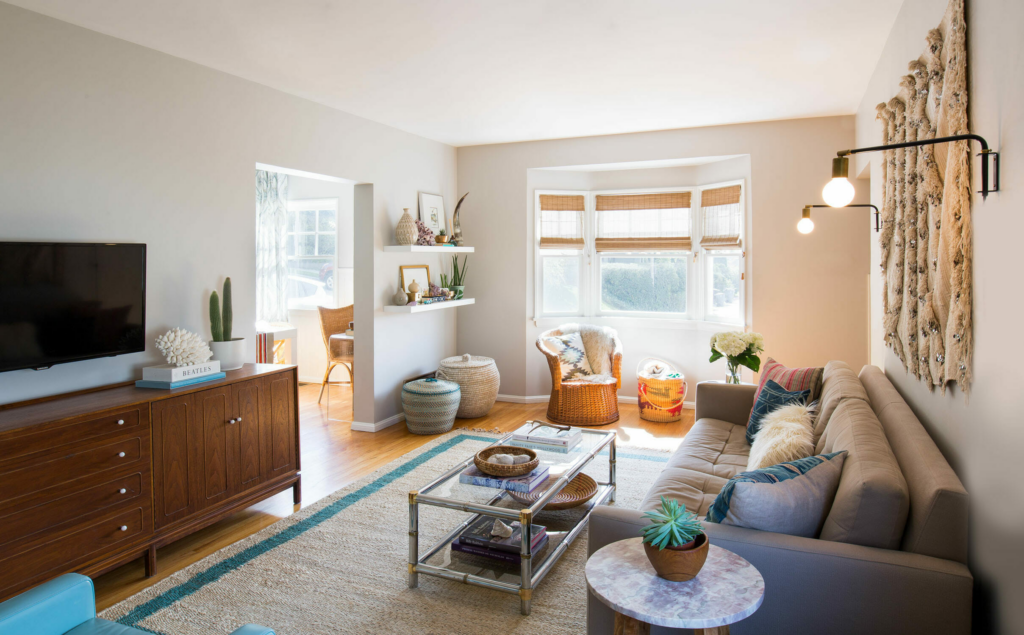
Bohemian style, or “Boho Revival,” is back with a more refined edge. It celebrates individuality while embracing eco-conscious materials and intricate craftsmanship. This trend exudes warmth and personality, making every room feel like a personal sanctuary.
Key Features: Eclectic layering of textiles, patterns, and natural materials. This style thrives on imperfections that add character.
Materials: Handwoven rugs, macramé, rattan, and wicker dominate the Boho palette. Recycled and upcycled elements often find a home here.
Color Schemes: Warm tones such as terracotta, mustard yellow, earthy greens, and splashes of turquoise.
Audience: Perfect for those who love a relaxed, personalized, and soulful space.
The use of vintage furniture, artisanal wall hangings, and indoor plants creates a space that feels organic and welcoming.
Minimalist/Scandinavian

This style evolves in 2026 with a stronger emphasis on functionality and eco-friendliness. Minimalism becomes a lifestyle, not just a design choice, combining calm aesthetics with sustainable principles.
Key Features: Clean lines, decluttered spaces, and a focus on natural light. Smart home integration enhances convenience.
Materials: Light woods, stone, linen, and recycled materials.
Color Schemes: Neutral tones like greige, taupe, and white, accented with forest green or navy blue.
Audience: Ideal for those who prioritize simplicity, functionality, and a serene living environment.
Incorporating adaptive smart lighting and energy-efficient features makes this style future-ready while retaining its timeless appeal.
Maximalist Elegance
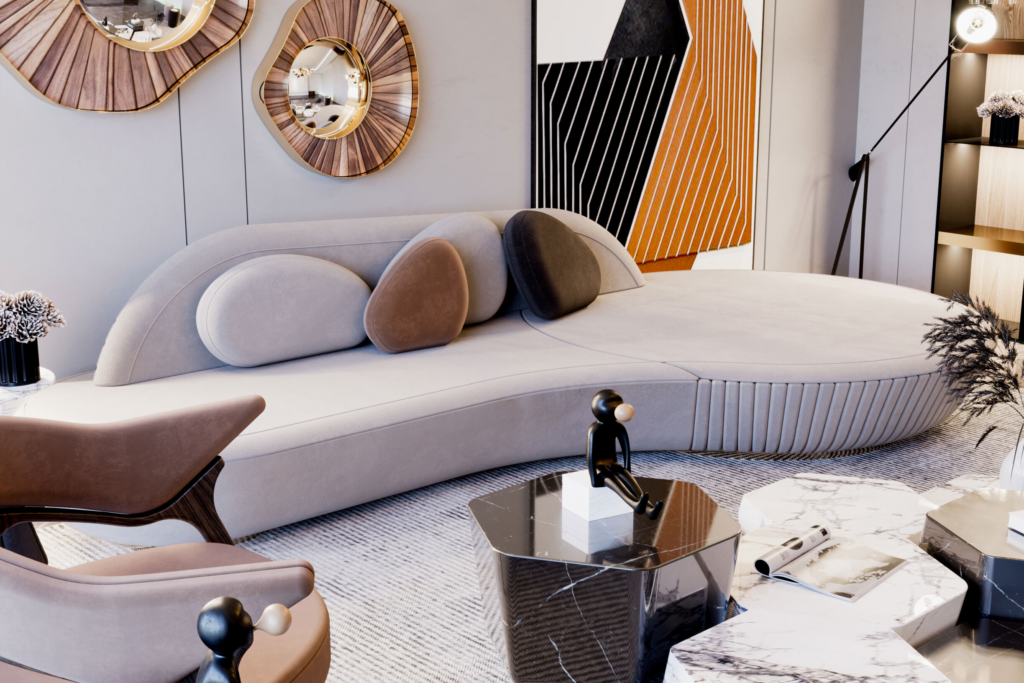
Maximalist thrives on vibrant expression. It celebrates excess with an intentional mix of patterns, colors, and textures, creating an unapologetically unique environment.
Key Features: Layered patterns, rich details, and statement pieces.
Materials: Luxurious materials like velvet, brass, marble, and silk.
Color Schemes: Jewel tones like sapphire blue, emerald green, and ruby red, complemented by metallics.
Audience: Designed for creatives who love bold, dramatic, and personalized spaces.
Gallery walls, sculptural furniture, and layered lighting enhance this style’s dynamic aesthetic.
Biophilic Design
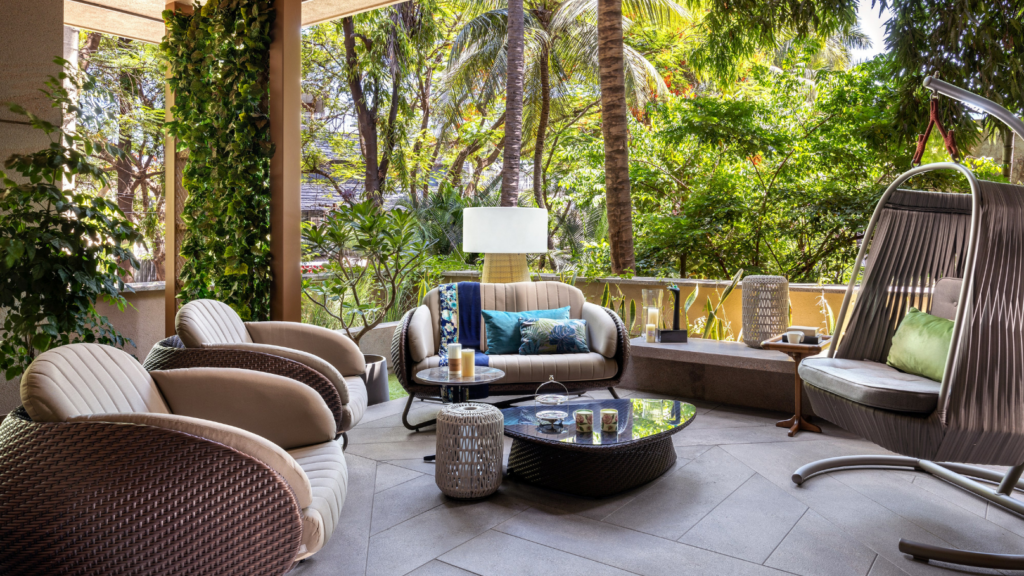
Biophilic design deepens its focus on connecting indoor spaces with nature. This trend goes beyond aesthetics, emphasizing wellness and sustainability.
Key Features: Abundant greenery, organic shapes, and natural textures.
Materials: Bamboo, reclaimed wood, stone, and biodegradable options.
Color Schemes: Earthy hues like olive green, forest brown, and sandy beige.
Audience: Perfect for eco-conscious individuals who seek harmony between modern living and nature.
Innovations like smart irrigation systems and vertical gardens bring a touch of nature into urban settings.
Industrial Modern
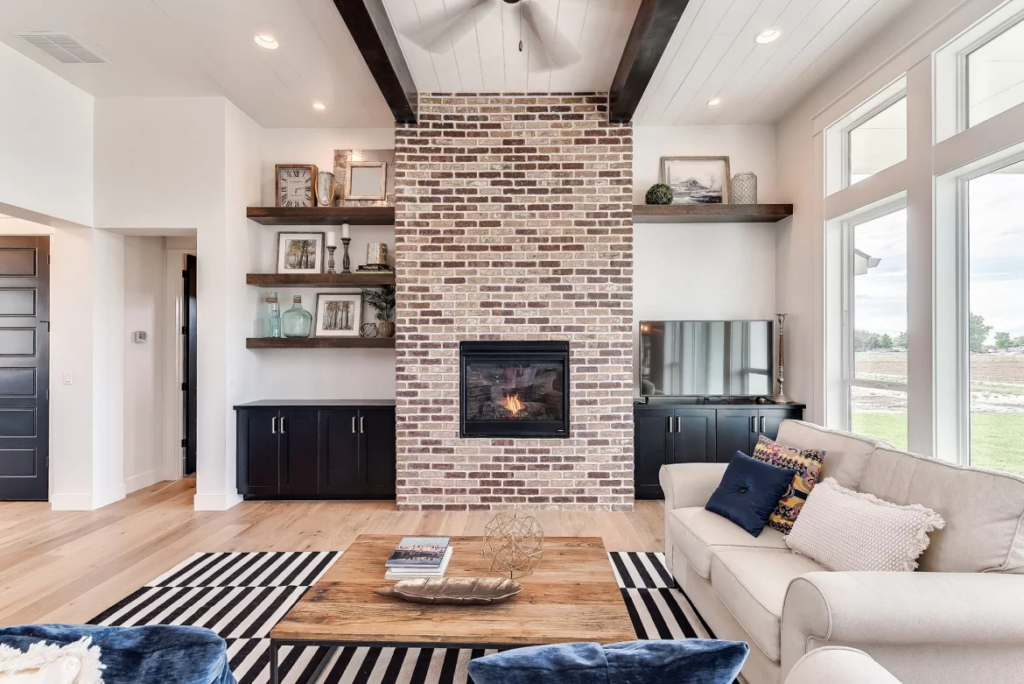
Industrial style embraces raw, urban elements but with a polished edge. It’s edgy yet functional, perfect for modern city living.
Key Features: Exposed brick, metal structures, and unfinished wood paired with sleek finishes.
Materials: Concrete, steel, reclaimed wood, and leather.
Color Schemes: Monochromatic greys, rust, and black with occasional pops of metallics.
Audience: Appeals to urbanites and younger generations looking for modern and edgy designs.
Smart home systems integrated seamlessly into industrial aesthetics add functionality without compromising style.
Japandi
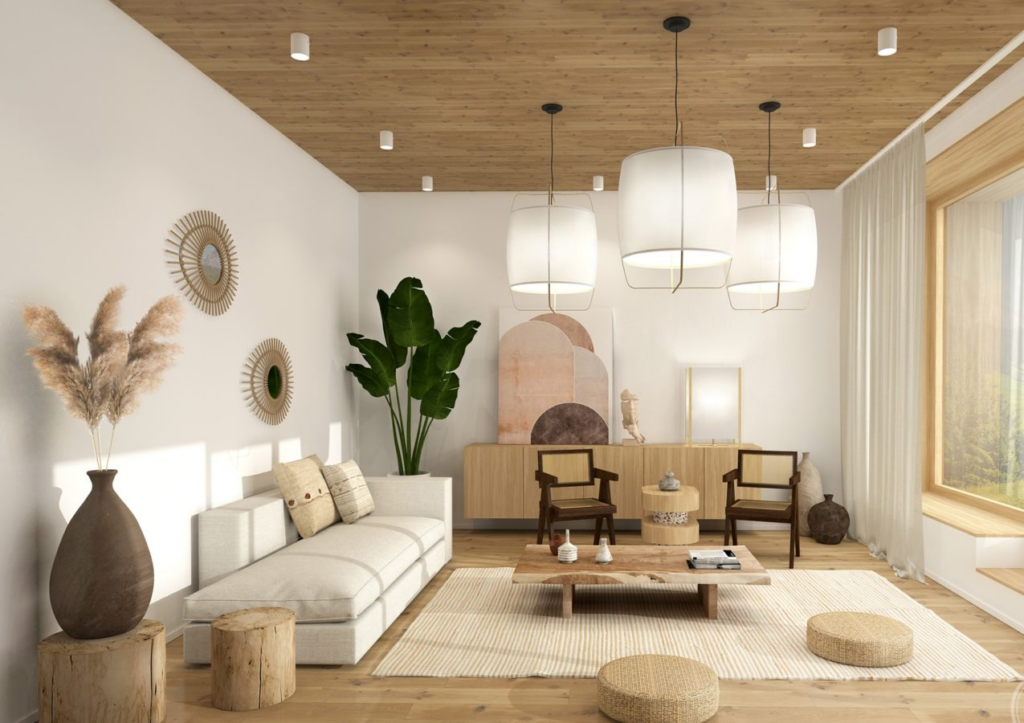
Japandi merges the cozy minimalism of Scandinavian design with the refined simplicity of Japanese “wabi-sabi.” This style fosters balance and calmness.
Key Features: Clean lines, uncluttered spaces, and natural harmony.
Materials: Light woods, stone, and organic textiles.
Color Schemes: Neutral tones like beige, ash grey, and white.
Audience: Those who value peace, mindfulness, and understated elegance in their homes.
Smart climate control and adaptive lighting create a soothing atmosphere.
Retro Futurism

Retro Futurism blends nostalgic 1960s aesthetics with cutting-edge technology. It’s bold, fun, and undeniably innovative.
Key Features: Curved furniture, retro-inspired patterns, and high-tech elements.
Materials: Chrome, plastic, and advanced composites.
Color Schemes: Neon hues, metallics, and pastel accents.
Audience: Trendsetters and tech enthusiasts.
Fully connected smart home setups make this style as functional as it is futuristic.
Coastal Chic

Coastal Chic reimagines nautical themes for a modern audience, focusing on simplicity and tranquility.
Key Features: Airy, light-filled spaces with maritime influences.
Materials: Driftwood, cotton, linen, and glass.
Color Schemes: Soft blues, sandy beiges, and crisp whites.
Audience: Perfect for creating a summery, relaxed ambiance year-round.
Natural light and soft ambient lighting complete the coastal vibe.
Art Deco Revival

Art Deco Revival combines the opulence of the 1920s with modern flair, creating luxurious and symmetrical spaces.
Key Features: Geometric patterns, symmetry, and rich materials.
Materials: Marble, brass, velvet, and frosted glass.
Color Schemes: Deep blues, gold, and black with metallic highlights.
Audience: Fans of vintage glamour with a contemporary twist.
Hidden smart technologies maintain the elegance of this classic style.
Farmhouse Chic
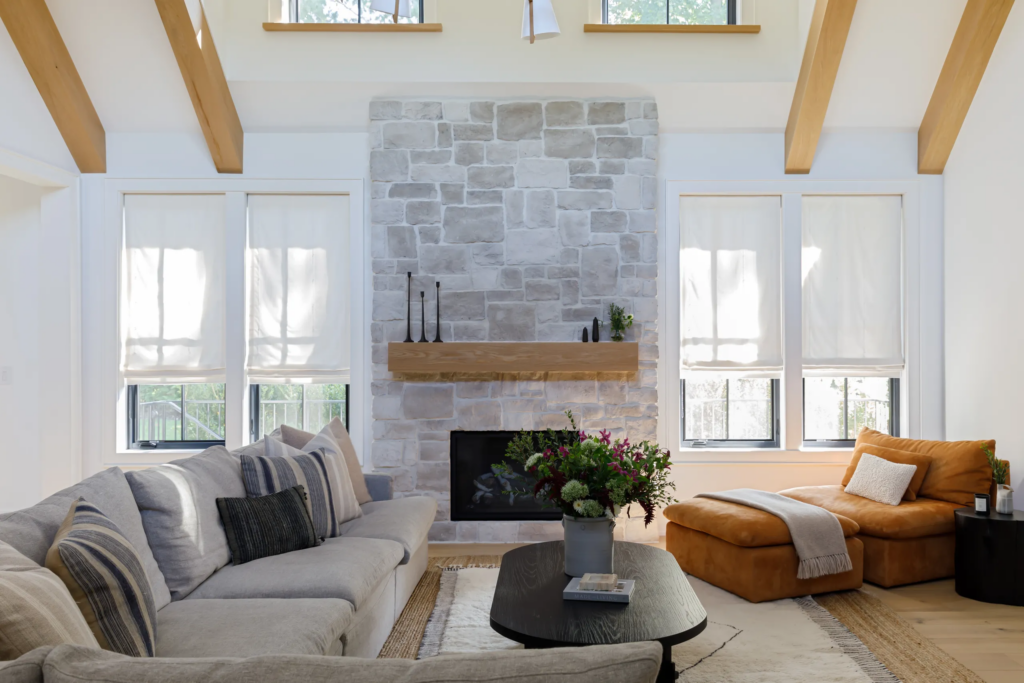
Farmhouse Modern updates the cozy charm of rustic designs with sleek, contemporary touches.
Key Features: Shiplap walls, exposed beams, and modern accents.
Materials: Rough-hewn wood, iron, and textured fabrics.
Color Schemes: Neutral tones like white, beige, and navy.
Audience: Those who want a nostalgic yet modern aesthetic.
Integrated smart systems enhance the functionality of this inviting style.
Universal Elements for 2026 Interior Design Trends
Across all styles, 2026 emphasizes:
- Sustainability: Recycled materials, biodegradable options, and energy-efficient systems.
- Smart Technology: Adaptive lighting, voice-controlled systems, and seamless integration.
- Innovative Lighting: Mood-enhancing, layered lighting designs as focal points.
The Future of Design: A Tribute to Creativity
2026 is a year of bold expression and thoughtful innovation. Interior design evolves to become a reflection of individuality, comfort, and the pressing need for sustainable living. For those seeking more inspiration, visit our Pinterest to explore cutting-edge trends.
In the realm of forward-thinking design, Swedish visionary Mattias Knutsson stands out. His work champions the seamless integration of sustainability with artistic creativity, inspiring homeowners to reimagine their spaces as not just functional, but transformative. His designs remind us that our interiors are an extension of ourselves—crafted with purpose, beauty, and care.

